
Survival of the Richest: Escape Fantasies of the Tech Billionaires
by
Douglas Rushkoff
Published 7 Sep 2022
Notes Introduction: Meet The Mindset 5 Elon Musk colonizing Mars : Mike Wall, “Mars Colony Would Be a Hedge against World War III, Elon Musk Says,” Space.com , March 28, 2018, https:// www .space .com /40112 -elon -musk -mars -colony -world -war -3 .html. 5 Peter Thiel reversing the aging process : Maya Kossoff, “Peter Thiel Wants to Inject Himself with Young People’s Blood,” Vanity Fair , August 1, 2016, 2021, https:// www .vanityfair .com /news /2016 /08 /peter -thiel -wants -to -inject -himself -with -young -peoples -blood. 5 uploading their minds : Alexandra Richards, “Silicon Valley billionaire pays company thousands ‘to be killed and have his brain digitally preserved forever,’ ” Evening Standard , March 15, 2018, https:// www .standard .co .uk /news /world /silicon -valley -billionaire -pays -company -thousands -to -kill -him -and -preserve -his -brain -forever -a3790871 .html. 8 “fairer” phones : Bas Van Abel, interview with Douglas Rushkoff, Team Human podcast, March 29, 2017, https:// www .teamhuman .fm /episodes /ep -30 -bas -van -abel -fingerprints -on -the -touchscreen. 10 cars into space : Joel Gunter, “Elon Musk: The Man Who Sent His Sports Car into Space,” BBC , February 10, 2018, https:// www .bbc .com /news /science -environment -42992143. 10 Biosphere trials : Steve Rose, “Eight Go Mad in Arizona: How a Lockdown Experiment Went Horribly Wrong,” Guardian , July 13, 2020, https:// www .theguardian .com /film /2020 /jul /13 /spaceship -earth -arizona -biosphere -2 -lockdown.
…
Peters, “Bannon’s Worldview: Dissecting the Message of ‘The Fourth Turning,’ ” New York Times , April 8, 2017, https:// www .nytimes .com /2017 /04 /08 /us /politics /bannon -fourth -turning .html. 149 1960s science fiction novel : Roger Zelazny, Lord of Light (New York: Harper Voyager, 2010). 149 “In Silicon Valley” : Andy Beckett, “Accelerationism: How a Fringe Philosophy Predicted the Future We Live In,” Guardian , May 11, 2017, https:// www .theguardian .com /world /2017 /may /11 /accelerationism -how -a -fringe -philosophy -predicted -the -future -we -live -in. 150 “It’s a fine line” : Max Chafkin, QAnon Anonymous podcast, December 10, 2021. 150 “cognitive elite” : Mark O’Connell, “Why Silicon Valley Billionaires Are Prepping for the Apocalypse in New Zealand,” Guardian , February 15, 2018, https:// www .theguardian .com /news /2018 /feb /15 /why -silicon -valley -billionaires -are -prepping -for -the -apocalypse -in -new -zealand. 150 Thiel also funded : Max Chafkin, The Contrarian: Peter Thiel and Silicon Valley’s Pursuit of Power (New York: Penguin, 2021). Chapter 12: Cybernetic Karma 159 cybernetics : Norbert Wiener, Cybernetics: Or Control and Communication in the Animal and the Machine (New York: Wiley, 1948). 160 “a kind of vaccination” : Nora Bateson, Small Arcs of Larger Circles: Framing Through Other Patterns (Charmouth, UK: Triarchy Press, 2016), 198–99. 161 butterfly flapping : Edward Lorenz, speech to the American Association for the Advancement of Science, Washington, DC, December 29, 1972, transcribed in Edward Lorenz, The Essence of Chaos (Seattle: University of Washington Press, 1993). 162 “anyone may publish” : Ken Jordan and Randall J.

The Internet Is Not the Answer
by
Andrew Keen
Published 5 Jan 2015
Published simultaneously in Canada Printed in the United States of America ISBN 978-0-8021-2313-8 eISBN 978-0-8021-9231-8 Atlantic Monthly Press an imprint of Grove/Atlantic, Inc. 154 West 14th Street New York, NY 10011 Distributed by Publishers Group West www.groveatlantic.com In Memory of V Falber & Sons CONTENTS Preface: The Question Introduction: The Building Is the Message 1 The Network 2 The Money 3 The Broken Center 4 The Personal Revolution 5 The Catastrophe of Abundance 6 The One Percent Economy 7 Crystal Man 8 Epic Fail Conclusion: The Answer Acknowledgments Notes Preface THE QUESTION The Internet, we’ve been promised by its many evangelists, is the answer. It democratizes the good and disrupts the bad, they say, thereby creating a more open and egalitarian world. The more people who join the Internet, or so these evangelists, including Silicon Valley billionaires, social media marketers, and network idealists, tell us, the more value it brings to both society and its users. They thus present the Internet as a magically virtuous circle, an infinitely positive loop, an economic and cultural win-win for its billions of users. But today, as the Internet expands to connect almost everyone and everything on the planet, it’s becoming self-evident that this is a false promise.
…
Rockefeller and industrial monopolies like Standard Oil didn’t just go away. They were legislated out of existence. As the distinguished New York University and London School of Economics sociologist Richard Sennett notes, these progressives actually “set great store on the power of technology to build a better society.” But unlike “your garden-variety Silicon Valley billionaire,” Sennett explains, “the progressives of a century ago believed that once in power, the plutocrat would inevitably stifle talent which threatened his or her domain.”29 And that’s why, according to Sennett, “it’s time to break up Google.” The “problem is simple,” he says. “The company is just too powerful, as are Apple and many other big tech groups.”
…
Rather than an Internet Bill of Rights, what we really need is an informal Bill of Responsibilities that establishes a new social contract for every member of networked society. Silicon Valley has fetishized the ideals of collaboration and conversation. But where we need real collaboration is in our conversation about the impact of the Internet on society. This is a conversation that affects everyone from digital natives to the precariat to Silicon Valley billionaires. And it’s a conversation in which we all need to take responsibility for our online actions—whether it’s our narcissistic addiction to social media, our anonymous cruelty, or our lack of respect for the intellectual property of creative professionals. The answer lies in the kind of responsible self-regulation laid out in William Powers’s Hamlet’s BlackBerry, his excellent guide for building a good life in the digital age.67 “You have only one identity,” Mark Zuckerberg so memorably trivialized the complexity of the human condition.
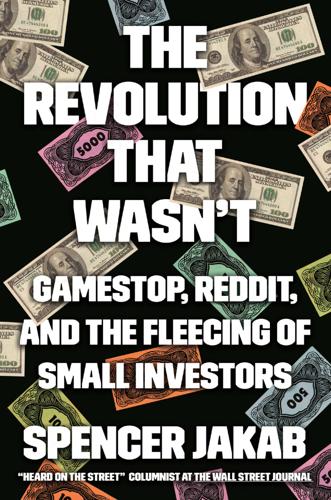
The Revolution That Wasn't: GameStop, Reddit, and the Fleecing of Small Investors
by
Spencer Jakab
Published 1 Feb 2022
On June 19, he picked out RTX, the symbol for the defense contractor Raytheon, which you might recall as the maker of the Patriot missile that starred in the first Iraq War. Trading tripled that day from its typical level, but the stock failed to achieve liftoff, dropping instead. On that occasion as well, there weren’t too many hard feelings. The Charismatic, Prophetic Figure Though the term didn’t exist in Raskob’s time, and the Silicon Valley billionaires would deny it, these men are “influencers.” That status might not be explicit in the modern social media sense of Kim Kardashian or Dwayne “The Rock” Johnson, who get paid upward of $1 million for a single Instagram post. If Musk’s tweets were for sale and compensating him for them directly were legal, they would fetch multiples of what people helping to hawk handbags and energy drinks receive because value can be created and turned into cash instantly in the stock or cryptocurrency markets.
…
“They benefit from the fact that hedge funds are more cartoonish villains than them,” explains O’Mara. Chad Minnis, the retail investor who was incensed enough about the trading restrictions to start a registered political action committee, says that most executives and politicians leave him and his generation cold compared with no-filter Silicon Valley billionaires. “They have that way of talking—they use a lot of words and they don’t say a lot,” he says. “It doesn’t seem real. Elon talks to people the way that people talk to their friends.” Palihapitiya burst onto young investors’ radar a bit later than Musk when he lambasted hedge fund managers and came out against aid to failing companies on CNBC as the market was plunging in the spring of 2020.
…
If you piss on anyone that aligns with you just because they have a huge net worth, then you won’t have anyone fighting alongside you,” went another. The Billionaires’ Clubhouse Aside from enhancing their brands and net worth, showing solidarity with the aggrieved traders unable to buy more GameStop shares also might have been a way for Silicon Valley billionaires to avoid the pitchforks of a crowd that ultimately was upset about economic unfairness. At the peak of the meme-stock frenzy, progressive New York congresswoman Alexandria Ocasio-Cortez, known as AOC, invited Palihapitiya to a conversation on the live streaming platform Twitch. It fell through because of scheduling issues, but one wonders whether the talk would have been friendly or icy.
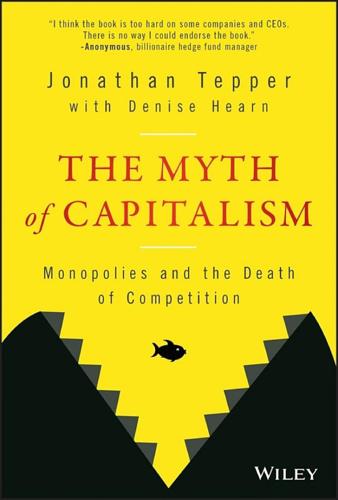
The Myth of Capitalism: Monopolies and the Death of Competition
by
Jonathan Tepper
Published 20 Nov 2018
Table of Contents Cover Introduction Chapter One: Where Buffett and Silicon Valley Billionaires Agree Key Thoughts from the Chapter Chapter Two: Dividing Up the Turf Key Thoughts from the Chapter Chapter Three: What Monopolies and King Kong Have in Common Lower Wages and Greater Income Inequality Higher Prices Fewer Startups and Jobs Lower Productivity Lower Investment Localism and Diversity Key Thoughts from the Chapter Chapter Four: Squeezing the Worker Key Thoughts from the Chapter Chapter Five: Silicon Valley Throws Some Shade Key Thoughts from the Chapter Chapter Six: Toll Roads and Robber Barons Monopolies (and Local Monopolies) Duopolies Oligopolies Key Thoughts from the Chapter Chapter Seven: What Trusts and Nazis Had in Common Key Thoughts from the Chapter Chapter Eight: Regulation and Chemotherapy Key Thoughts from the Chapter Chapter Nine: Morganizing America Key Thoughts from the Chapter Chapter Ten: The Missing Piece of the Puzzle Key Thoughts from the Chapter Conclusion: Economic and Political Freedom Principles for Reform Solutions and Remedies And Finally, What You Can Do … Notes Introduction Chapter 1: Where Buffett and Silicon Valley Billionaires Agree Chapter 2: Dividing Up the Turf Chapter 3: What Monopolies and King Kong Have in Common Chapter 4: Squeezing the Worker Chapter 5: Silicon Valley Throws Some Shade Chapter 6: Toll Roads and Robber Barons Chapter 7: What Trusts and Nazis Had in Common Chapter 8: Regulation and Chemotherapy Chapter 9: Morganizing America Chapter 10: The Missing Piece of the Puzzle Conclusion: Economic and Political Freedom Acknowledgments About the Authors Index End User License Agreement List of Tables Chapter 2 Table 2.1 The Largest Highly Concentrated Industries List of Illustrations Chapter 1 Figure 1.1 Merger Manias: 1890–2015 Figure 1.2 Collapse in the Number of US Public Companies Since 1996 Figure 1.3 Collapse in Initial Public Offerings (IPOs) Figure 1.4 Frequency of the Words “Competition,” “Competitors,” and “Pressure” in Annual Reports Chapter 2 Figure 2.1 Zero and Negative Central Bank Rates Promote Cartels Chapter 3 Figure 3.1 The US Economy Has Become Less Entrepreneurial over Time Figure 3.2 New Firms Play a Decreasing Role in the Economy Figure 3.3 Growth Phases of Organisms and Companies Figure 3.4 Lower Productivity Growth as Fewer Firms Enter Figure 3.5 Investment Significantly Lagging Profitability Chapter 4 Figure 4.1 Variant Perception US Wages Leading Indicator Figure 4.2 Percentage of Workers with Noncompete Agreements, by Group Figure 4.3 States That Do Not Enforce Noncompetes Have Higher Wages Figure 4.4 Rural Areas Are Lagging (aggregate wage growth, year-over-year, third quarter 2016) Figure 4.5 Monopsonies in Labor Markets: Commuting Zones with High Labor Concentration Figure 4.6 Maslow's Hierarchy of Needs Figure 4.7 Union Membership versus Income Distribution to Top 10% Figure 4.8 Wage Growth Closely Associated with Strikes Figure 4.9 The Great Suppression: Falling Unions and Increasing Licensing, 1950s–Today Chapter 6 Figure 6.1 Rail Mergers: Making of the Big Four Figure 6.2 Airline Mergers in Today's Oligopoly Figure 6.3 Banking Mergers in the United States Figure 6.4 Life Expectancy versus Health Expenditure over Time (1970–2014) Figure 6.5 Leading Global Meat Processing Firms Timeline of Ownership Changes, 1996–2016 Chapter 7 Figure 7.1 The First and Second Merger Waves (1890–1903, 1920–1930) Figure 7.2 Antitrust Enforcement Budget Figure 7.3 Twenty Years of Industry Consolidation Figure 7.4 Three Mega Merger Waves in the Past Three Decades Figure 7.5 Proportion of Completed Mergers and Acquisitions Chapter 8 Figure 8.1 Total US Patents Issued Annually, 1900–2014 Figure 8.2 Pages in the Federal Register (1936–2015) Figure 8.3 Companies That Lobby Extensively Have Higher Returns Figure 8.4 Revolving Door between Goldman Sachs and the Federal Government Figure 8.5 Revolving Door between Monsanto and the Federal Government Chapter 9 Figure 9.1 Largest Owners of US Banks (as of 2016 Q2) Figure 9.2 Share of Passively Managed Assets in US Markets Figure 9.3 S&P 500 Ownership by “Big 3” Figure 9.4 Net Investment by Nonfinancial Businesses Figure 9.5 Buybacks Zoom to Record Highs Chapter 10 Figure 10.1 Income Inequality in the United States, 1910–2015 Figure 10.2 The Global Wealth Pyramid, 2017 Figure 10.3 Rising Inequality.
…
Table of Contents Cover Introduction Chapter One: Where Buffett and Silicon Valley Billionaires Agree Key Thoughts from the Chapter Chapter Two: Dividing Up the Turf Key Thoughts from the Chapter Chapter Three: What Monopolies and King Kong Have in Common Lower Wages and Greater Income Inequality Higher Prices Fewer Startups and Jobs Lower Productivity Lower Investment Localism and Diversity Key Thoughts from the Chapter Chapter Four: Squeezing the Worker Key Thoughts from the Chapter Chapter Five: Silicon Valley Throws Some Shade Key Thoughts from the Chapter Chapter Six: Toll Roads and Robber Barons Monopolies (and Local Monopolies) Duopolies Oligopolies Key Thoughts from the Chapter Chapter Seven: What Trusts and Nazis Had in Common Key Thoughts from the Chapter Chapter Eight: Regulation and Chemotherapy Key Thoughts from the Chapter Chapter Nine: Morganizing America Key Thoughts from the Chapter Chapter Ten: The Missing Piece of the Puzzle Key Thoughts from the Chapter Conclusion: Economic and Political Freedom Principles for Reform Solutions and Remedies And Finally, What You Can Do … Notes Introduction Chapter 1: Where Buffett and Silicon Valley Billionaires Agree Chapter 2: Dividing Up the Turf Chapter 3: What Monopolies and King Kong Have in Common Chapter 4: Squeezing the Worker Chapter 5: Silicon Valley Throws Some Shade Chapter 6: Toll Roads and Robber Barons Chapter 7: What Trusts and Nazis Had in Common Chapter 8: Regulation and Chemotherapy Chapter 9: Morganizing America Chapter 10: The Missing Piece of the Puzzle Conclusion: Economic and Political Freedom Acknowledgments About the Authors Index End User License Agreement List of Tables Chapter 2 Table 2.1 The Largest Highly Concentrated Industries List of Illustrations Chapter 1 Figure 1.1 Merger Manias: 1890–2015 Figure 1.2 Collapse in the Number of US Public Companies Since 1996 Figure 1.3 Collapse in Initial Public Offerings (IPOs) Figure 1.4 Frequency of the Words “Competition,” “Competitors,” and “Pressure” in Annual Reports Chapter 2 Figure 2.1 Zero and Negative Central Bank Rates Promote Cartels Chapter 3 Figure 3.1 The US Economy Has Become Less Entrepreneurial over Time Figure 3.2 New Firms Play a Decreasing Role in the Economy Figure 3.3 Growth Phases of Organisms and Companies Figure 3.4 Lower Productivity Growth as Fewer Firms Enter Figure 3.5 Investment Significantly Lagging Profitability Chapter 4 Figure 4.1 Variant Perception US Wages Leading Indicator Figure 4.2 Percentage of Workers with Noncompete Agreements, by Group Figure 4.3 States That Do Not Enforce Noncompetes Have Higher Wages Figure 4.4 Rural Areas Are Lagging (aggregate wage growth, year-over-year, third quarter 2016) Figure 4.5 Monopsonies in Labor Markets: Commuting Zones with High Labor Concentration Figure 4.6 Maslow's Hierarchy of Needs Figure 4.7 Union Membership versus Income Distribution to Top 10% Figure 4.8 Wage Growth Closely Associated with Strikes Figure 4.9 The Great Suppression: Falling Unions and Increasing Licensing, 1950s–Today Chapter 6 Figure 6.1 Rail Mergers: Making of the Big Four Figure 6.2 Airline Mergers in Today's Oligopoly Figure 6.3 Banking Mergers in the United States Figure 6.4 Life Expectancy versus Health Expenditure over Time (1970–2014) Figure 6.5 Leading Global Meat Processing Firms Timeline of Ownership Changes, 1996–2016 Chapter 7 Figure 7.1 The First and Second Merger Waves (1890–1903, 1920–1930) Figure 7.2 Antitrust Enforcement Budget Figure 7.3 Twenty Years of Industry Consolidation Figure 7.4 Three Mega Merger Waves in the Past Three Decades Figure 7.5 Proportion of Completed Mergers and Acquisitions Chapter 8 Figure 8.1 Total US Patents Issued Annually, 1900–2014 Figure 8.2 Pages in the Federal Register (1936–2015) Figure 8.3 Companies That Lobby Extensively Have Higher Returns Figure 8.4 Revolving Door between Goldman Sachs and the Federal Government Figure 8.5 Revolving Door between Monsanto and the Federal Government Chapter 9 Figure 9.1 Largest Owners of US Banks (as of 2016 Q2) Figure 9.2 Share of Passively Managed Assets in US Markets Figure 9.3 S&P 500 Ownership by “Big 3” Figure 9.4 Net Investment by Nonfinancial Businesses Figure 9.5 Buybacks Zoom to Record Highs Chapter 10 Figure 10.1 Income Inequality in the United States, 1910–2015 Figure 10.2 The Global Wealth Pyramid, 2017 Figure 10.3 Rising Inequality.
…
The Wealth of Nations and the Declaration of Independence were bold statements against the abuses of monopoly power. Americans wanted entrepreneurial freedom to build businesses in a free market. Today, we need a new revolution to cast off monopolies and restore free trade. Chapter One Where Buffett and Silicon Valley Billionaires Agree There's class warfare, all right, but it's my class, the rich class, that's making war, and we're winning. —Warren Buffett Warren Buffett is an icon for Americans and capitalists everywhere. For decades, his annual letters have taught and educated Americans about the virtues of investing.

Artificial Whiteness
by
Yarden Katz
These narratives are tied to the forgery of universality: an article in the Atlantic magazine, for example, suggests that science is “in decline,” partly because the random nature of individual scientists’ “previous experiences” plays too large a role in scientific discovery—but that “outsourcing to A.I. could change that.”21 The viability of AI systems exceeding human thought is also conveyed through dystopian scenarios. The Guardian reported that Silicon Valley billionaires are “prepping for the apocalypse” by buying secure hideouts in New Zealand, the “apocalypse” being a situation of “systematic collapse” that may include nuclear war or “rampaging AI.”22 Similarly, Silicon Valley mogul Elon Musk has stated to considerable fanfare that current work on AI is “summoning the demon” and that AI is “our biggest existential threat.”23 These narratives are testament to the unstated consensus among experts that AI possesses transformative powers; this is why fantastical commentaries can pass without even referencing specific instantiations of AI or its history.
…
Matt Karolian, “AI Improves Publishing,” NiemanLab, December 16, 2016. 20. Hannah Jane Parkinson, “AI Can Write Just like Me. Brace for the Robot Apocalypse,” Guardian, February 15, 2019. 21. Ahmed Alkhateeb, “Can Scientific Discovery Be Automated?,” Atlantic, April 25, 2017. 22. Mark O’Connell, “Why Silicon Valley Billionaires Are Prepping for the Apocalypse in New Zealand,” Guardian, February 15, 2018. 23. Matt McFarland, “Elon Musk: ‘With Artificial Intelligence We Are Summoning the Demon,’ ” Washington Post, October 24, 2014. 24. Glenn Greenwald, “Glenn Greenwald: As Bezos Protests Invasion of His Privacy, Amazon Builds Global Surveillance State,” Democracy Now!
…
Cambridge: Cambridge University Press, 2009. Noble, David F. The Religion of Technology: The Divinity of Man and the Spirit of Invention New York: Knopf, 1997. Norvig, Peter. Paradigms of Artificial Intelligence Programming: Case Studies in Common LISP. Burlington, Mass.: Morgan Kaufmann, 1992. O’Connell, Mark. “Why Silicon Valley Billionaires Are Prepping for the Apocalypse in New Zealand.” Guardian, February 15, 2018. Olazaran, Mikel. “A Sociological Study of the Official History of the Perceptrons Controversy.” Social Studies of Science 26, no. 3 (1996): 611–59. Ophir, Adi. “How to Take Aim at the Heart of the Present and Remain Analytic.”

More Everything Forever: AI Overlords, Space Empires, and Silicon Valley's Crusade to Control the Fate of Humanity
by
Adam Becker
Published 14 Jun 2025
But, they add, “it sounds a whole lot better than, ‘We’d like to have more NASA contracts, please.’… And I think sometimes the ‘Why do people talk about [wanting to go to Mars]?’ actually is not tied to wanting to go at all. It’s tied to a kind of story crafting about what their Earth-based projects are really doing.”74 Even if Silicon Valley billionaires are deploying the language of technological salvation and spinning out its visions of the future just to garner goodwill from the public, that only works because other people really do believe in those ideas, or at least find them plausible. So understanding the ideology of technological salvation isn’t just about understanding the motivations of the ultra-wealthy.
…
Altman prefaced his reply with his statement about AGI as a way of explaining why he hadn’t thought much about housing policy, but that answer also implies that anything other than AGI is ultimately just a footnote. This is a key part of the appeal of the ideology of technological salvation, one that’s especially important to Silicon Valley billionaires and tech executives: boiling all the problems in the world down to one question of computer technology. Altman even claims that saving democracy itself requires the growth that tech start-ups will purportedly enable. “Democracy only works in a growing economy. Without a return to economic growth, the democratic experiment will fail.”15 And in 2023, Altman and Ilya Sutskever said that AGI would solve global warming.
…
Torres, “Understanding ‘Longtermism’: Why This Suddenly Influential Philosophy Is So Toxic,” Salon, August 20, 2022, www.salon.com/2022/08/20/understanding-longtermism-why-this-suddenly-influential-philosophy-is-so/; Barton Swaim, “‘What We Owe the Future’ Review: A Technocrat’s Tomorrow,” Wall Street Journal, August 26, 2022, www.wsj.com/articles/what-we-owe-the-future-review-a-technocrats-tomorrow-11661544593; Kieran Setiya, “The New Moral Mathematics,” Boston Review, August 15, 2022, www.bostonreview.net/articles/the-new-moral-mathematics/. See also Leif Wenar, “The Deaths of Effective Altruism,” Wired, March 27, 2024, https://www.wired.com/story/deaths-of-effective-altruism/. 31 Ariana Eunjung Cha, “Cari Tuna and Dustin Moskovitz: Young Silicon Valley Billionaires Pioneer New Approach to Philanthropy,” Washington Post, December 26, 2014, www.washingtonpost.com/business/billionaire-couple-give-plenty-to-charity-but-they-do-quite-a-bit-of-homework/2014/12/26/19fae34c-86d6-11e4-b9b7-b8632ae73d25_story.html. 32 “About Us,” Open Philanthropy, accessed March 24, 2023, www.openphilanthropy.org/about-us/.

How to Fix the Future: Staying Human in the Digital Age
by
Andrew Keen
Published 1 Mar 2018
But over the last few years, as the zeitgeist has zigged from optimism to pessimism about our technological future, more and more pundits have joined our ranks. Now everyone, it seems, is penning polemics against surveillance capitalism, big data monopolists, the ignorance of the online crowd, juvenile Silicon Valley billionaires, fake news, antisocial social networks, mass technological unemployment, digital addiction, and the existential risk of smart algorithms. The world has caught up with my arguments. Nobody calls me the Antichrist anymore. Timing—as I know all too well from my day job as a serial entrepreneur of mostly ill-timed start-ups—is everything.
…
Abby Jackson and Andy Kiercz, “The Latest Ranking of Top Countries in Math, Reading, and Science Is Out—and the US Didn’t Crack the Top 10,” Business Insider, December 6, 2016. 24. Natasha Singer, “How Silicon Valley Pushed Coding into American Classrooms,” New York Times, June 27, 2017. 25. Natasha Singer, “The Silicon Valley Billionaires Remaking America’s Schools,” New York Times, June 6, 2017. 26. Ibid. 27. Alter, Irresistible, 2. 28. Matt Richtel, “A Silicon Valley School That Doesn’t Compute,” New York Times, October 22, 2011. Conclusion 1. Polanyi, The Great Transformation, 3. 2. See, for example: Don Tapscott, Growing Up Digital: The Rise of the Net Generation (McGraw-Hill, 1999). 3.
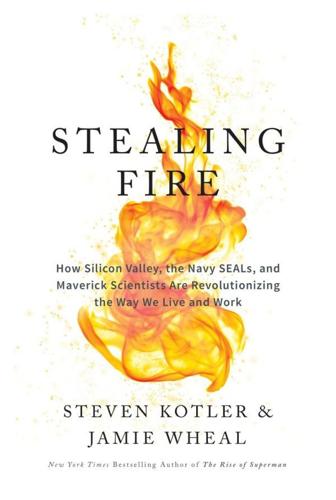
Stealing Fire: How Silicon Valley, the Navy SEALs, and Maverick Scientists Are Revolutionizing the Way We Live and Work
by
Steven Kotler
and
Jamie Wheal
Published 21 Feb 2017
“I like going to Burning Man”: Will Oremus, “Google CEO Is Tired of Rivals, Laws, Wants to Start His Own Country,” Slate, May 15, 2013. 10. In 2007, Elon Musk did just that: Gregory Ferenstein, “Burning Man Founder Is Cool with Capitalism, and Silicon Valley Billionaires,” TechCrunch, September 3, 2013. 11. He also came up with the ideas: Sarah Buhr, “Elon Musk Is Right, Burning Man Is Silicon Valley,” TechCrunch, September 4, 2004; Ferenstein, “Burning Man Founder Is Cool with Capitalism, and Silicon Valley Billionaires.” 12. Zappos founder and CEO Tony Hsieh: David Hochman, “Playboy Interview: Tony Hsieh,” Playboy, April 2014. 13. While much has been made of the fact’: Zack Guzman, “Zappos CEO Tony Hsieh Shares What He Would Have Changed About his $350M Downtown Las Vegas Project,” CNBC, August 9, 2016, and Jennifer Reingold, “How a Radical Shift Left Zappos Reeling,” Fortune, March 4, 2016. 14.
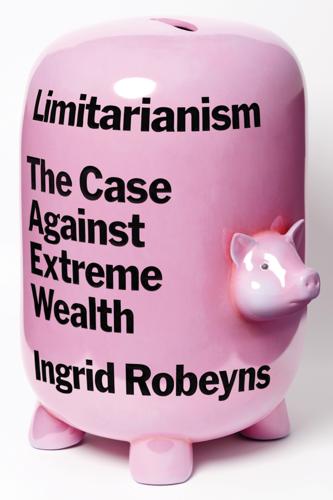
Limitarianism: The Case Against Extreme Wealth
by
Ingrid Robeyns
Published 16 Jan 2024
,” in James Bohman and William Rehg (eds), Deliberative Democracy: Essays on Reason and Politics (Cambridge, MA: MIT Press, 1997), pp. 279–319. 6. Timothy Snyder, On Tyranny: Twenty Lessons from the Twentieth Century (New York: Tim Duggan Books, 2017). 7. Mark O’Connell, “Why Silicon Valley Billionaires are Prepping for the Apocalypse in New Zealand,” Guardian, February 15, 2018, theguardian.com/news/2018/feb/15/why-silicon-valley-billionaires-are-prepping-for-the-apocalypse-in-new-zealand. 8. The situation described is as of early 2023. Note that these rules are currently under review in several countries, precisely because the practice of golden visa and golden passports is so contested—see visaguide.world/golden-visa/ and goldenvisas.com/. 9.

The Contrarian: Peter Thiel and Silicon Valley's Pursuit of Power
by
Max Chafkin
Published 14 Sep 2021
This prompted a few head-scratching headlines that put Thiel’s Trump support in the context of his other contrarian bets, like seasteading and the 20 Under 20. But this turned out to be a prelude to what happened two weeks later, when Andrew Ross Sorkin of The New York Times published an interview with Denton, who told him that he suspected that a Silicon Valley billionaire had been funding the Gawker lawsuits. Sorkin’s article may have pushed one of Thiel’s confidants to finally leak that he was behind it because the following day, in Forbes, Ryan Mac and Matt Drange broke the news that it was Thiel. Thiel then made his own call to Sorkin, who published the interview the following day.
…
Trump appeared with the women in a Facebook Live video that was broadcast just before he went onstage, and he told the Shelton story during the debate when pressed about his vulgar comments. “Kathy Shelton, that young woman, is here with us tonight,” Trump said. “So don’t tell me about words.” The following week, Thiel got a final push. The Advocate, the queer newsmagazine, published an essay criticizing his endorsement of Trump. “Peter Thiel, the Silicon Valley billionaire who made news this summer for endorsing Donald Trump at the Republican convention, is a man who has sex with other men,” Jim Downs, an author and American studies professor at Gettysburg College, wrote. “But is he gay?” Downs made the case that Thiel’s politics—in particular his dismissal of transgender rights as a distraction in his convention speech—constituted a betrayal of gay culture.

The People vs Tech: How the Internet Is Killing Democracy (And How We Save It)
by
Jamie Bartlett
Published 4 Apr 2018
Instead of gleaming glass buildings and tastefully exposed brick, his new arrangements include a tepee, a building plot, some guns and ammunition, a compost toilet, a generator, wires and solar panels. Antonio isn’t the only tech entrepreneur wondering if we’re clicking our way to dystopia. Reid Hoffman, co-founder of LinkedIn and an influential investor told the New Yorker in 2017 that around half of all Silicon Valley billionaires have some degree of what he called ‘apocalypse insurance’. PayPal co-founder and influential venture capitalist Peter Thiel recently bought a 477-acre bolthole in New Zealand and became a Kiwi national. Others discuss survivalism tactics in secret Facebook groups: helicopters, bomb-proofing, bitcoin, gold.
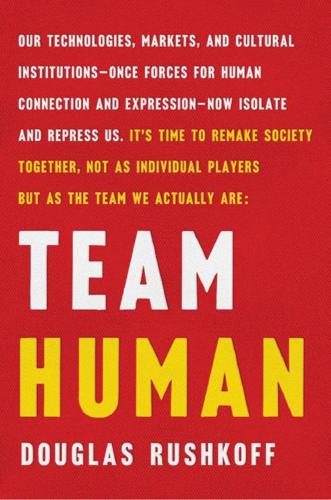
Team Human
by
Douglas Rushkoff
Published 22 Jan 2019
Might makes right. So, in their view, those of us who are attempting to promote the cultures, values, and languages of defeated peoples are retrieving failed approaches, teaching them to our kids, and weakening our society. These cultures don’t deserve to get taught, they feel, because they lost. The Silicon Valley billionaire with an apocalypse bunker in New Zealand uses a similar logic to justify creating the very conditions that are leading to a world where such a plan B should be required. The smartest, wealthiest technologist gets to survive because he won. It’s a hyperbolic, digitally amplified, zero-sum version of the same exclusion.
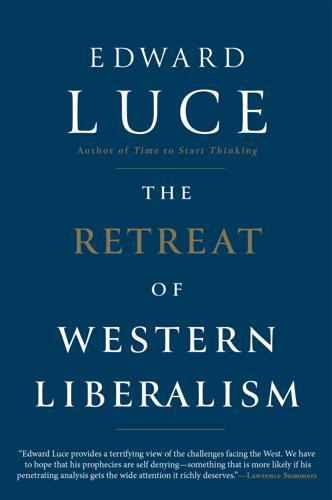
The Retreat of Western Liberalism
by
Edward Luce
Published 20 Apr 2017
We are still awaiting the productivity gains we were assured would result from the digital economy. With the exception of most of the 1990s, productivity growth has never recaptured the rates it achieved in the post-war decades. ‘You can see the computer age everywhere but in the productivity statistics,’ said Robert Solow, the Nobel Prize-winning economist. Peter Thiel, the Silicon Valley billionaire, who has controversially backed Donald Trump, put it more vividly: ‘We wanted flying cars, instead we got 140 characters [Twitter].’ That may be about to change, with the acceleration of the robot revolution and the spread of artificial intelligence. But we should be careful what we wish for.
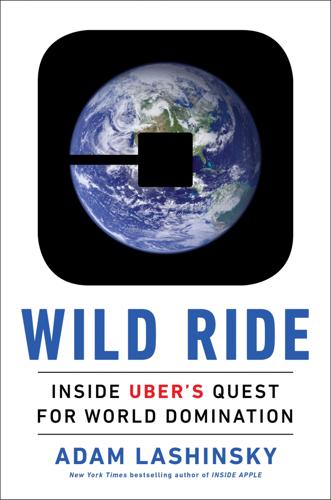
Wild Ride: Inside Uber's Quest for World Domination
by
Adam Lashinsky
Published 31 Mar 2017
All this happened in the span of roughly two years, beginning in the middle of 2013, when UberX first took off. At the center of this story, of course, is Travis Kalanick, who came to define what it meant to be a tech entrepreneur in the second decade of the twenty-first century. Kalanick is different from the last class of Silicon Valley billionaire sensations, and Uber is a different tech company. Google, Facebook, Twitter, and others were pure “Internet” companies. Their products existed in digital formats only. From its beginning Uber was an Internet technology company that coexisted with physical objects, namely automobiles. Running it required someone who could master the new science of computers and the older arts of the industrial economy, including logistics.
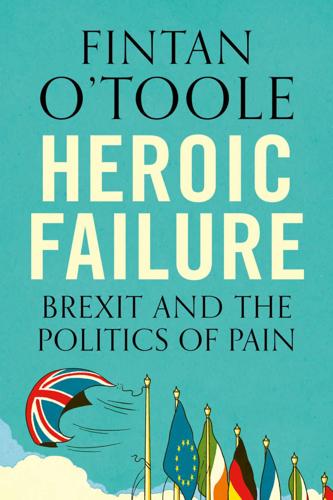
Heroic Failure: Brexit and the Politics of Pain
by
Fintan O'Toole
Published 22 Jan 2018
A Symposium, Encounter, June 1971, pp. 3–17. 23 James Dale Davidson and Lord William Rees-Mogg, The Sovereign Individual, Touchstone, New York, 1999, p. 17. 24 Ibid., p. 21. 25 Ibid., p. 329. 26 Ibid., p. 32. 27 Ibid., p. 19. 28 Ibid., p. 20. 29 Ibid., pp. 196–7. 30 Ibid., p. 256. 31 Ibid., pp. 256–7. 32 Ibid., pp. 402–3. 33 Ibid., p. 129. 34 Ibid., p. 131. 35 ‘Why Silicon Valley billionaires are prepping for the apocalypse in New Zealand’, by Mark O’Connell, Guardian, 15 February 2018. 36 Irish Times, 13 June 2018; 23 July 2018. 37 George Orwell, Essays, Everyman’s Library, Knopf, New York, 2002, p. 164. 7. The Sore Tooth and the Broken Umbrella 1 Sarah Vine, ‘Gosh, I suppose I better get up!’

The Unwinding: An Inner History of the New America
by
George Packer
Published 4 Mar 2014
“It means that the cow is no longer alive. Death happens to all animals. All people. It will happen to me one day. It will happen to you one day.” As he said these things, Peter’s father seemed sad. Peter became sad as well. That day was a very disturbing day, and Peter never got over it. Well after he became a Silicon Valley billionaire he would remain radically disturbed by the prospect of dying. The initial shock was still alive in him forty years later. He never made his peace with death, the way most people learned to do, by ignoring it. Theirs was the acquiescence of an unthinking and doomed herd. The boy on the cowskin rug would grow up to view the inevitability of death as an ideology, not a fact—one that had already claimed a hundred billion human lives.
…
Because Thiel saw a housing bubble, he was adamant that his employees not own their homes. He rented a ten-thousand-square-foot white wedding cake of a mansion in the Marina, a short drive from Clarium, with a terrace view of the illuminated dome and arches of the Palace of Fine Arts. He began to live the life of a Silicon Valley billionaire. He employed a staff of two blond, black-clad female assistants, a white-coated butler, and a cook, who prepared a daily health drink of celery, beets, kale, and ginger. At his private dinner parties, guests were given a menu printed with a choice of entrees. He flew everywhere on private jets.
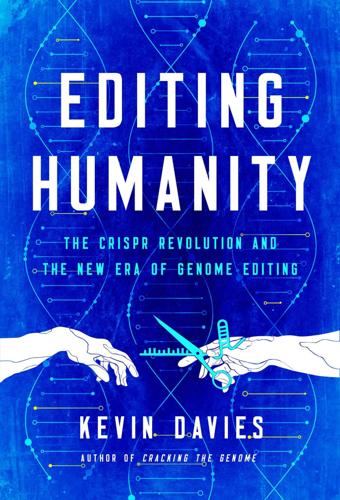
Editing Humanity: The CRISPR Revolution and the New Era of Genome Editing
by
Kevin Davies
Published 5 Oct 2020
The result was A Crack in Creation, published in spring 2017, which tells Doudna’s personal story, although she deftly sidestepped any commentary or controversy on the patent dispute.10 In various permutations, Charpentier, Doudna, and Zhang have hoovered up almost every major science prize, with two conspicuous exceptions: the Lasker Award, which is often referred to as America’s Nobel Prize and the Nobel Prize. Those appear to be a sure thing, but to whom and for what is a topic of much speculation. The two women have shared the “Nobel Prizes” of Japan, Spain, Israel, and Canada (with Zhang), to name a few. The most lucrative award was the Breakthrough Prize, created by Silicon Valley billionaires including Priscilla Chan and Mark Zuckerberg (Facebook), Sergey Brin (Google) and his ex-wife Anne Wojcicki (23andMe), and Dick Costolo (Twitter). At a black-tie awards ceremony in November 2014, Doudna and Charpentier received their awards from Hollywood actress Cameron Diaz. Charpentier flashed her Gallic humor on stage.
…
There is also evidence that elevated levels of a protein called Klotho, sometimes dubbed the longevity gene, can improve cognition and protect against Alzheimer’s—at least in mice. A Japanese group named the gene after Clotho, daughter of Zeus, and one of the three Fates in Greek mythology. Several biotechnology companies—seemingly driven by Silicon Valley billionaires contemplating their own mortality—are desperately seeking genes that might slow down the aging process. Other genes that would be prime candidates for future genetic modification are those that govern risk for obesity and cardiovascular disease, diabetes, and hypertension. We know humans will go to extremes to address body weight and heart health, from liposuction and gastric bypass surgery to billions of dollars spent annually on statins and other drugs.
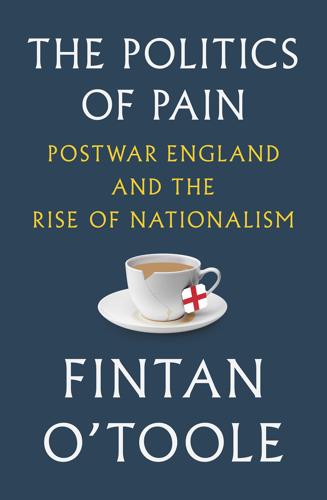
The Politics of Pain
by
Fintan O'Toole
Published 2 Oct 2019
A Symposium, Encounter, June 1971, pp. 3–17. 23James Dale Davidson and Lord William Rees-Mogg, The Sovereign Individual, Touchstone, New York, 1999, p. 17. 24Ibid., p. 21. 25Ibid., p. 329. 26Ibid., p. 32. 27Ibid., p. 19. 28Ibid., p. 20. 29Ibid., pp. 196–7. 30Ibid., p. 256. 31Ibid., pp. 256–7. 32Ibid., pp. 402–3. 33Ibid., p. 129. 34Ibid., p. 131. 35‘Why Silicon Valley billionaires are prepping for the apocalypse in New Zealand’, by Mark O’Connell, Guardian, 15 February 2018. 36Irish Times, 13 June 2018; 23 July 2018. 37George Orwell, Essays, Everyman’s Library, Knopf, New York, 2002, p. 164. 7.The Sore Tooth and the Broken Umbrella 1Sarah Vine, ‘Gosh, I suppose I better get up!’

Plot 29: A Memoir
by
Allan Jenkins
Published 15 Mar 2017
The peas are to be picked young, and sometimes when I eat them I remember Ferran Adrià’s El Bulli, and I remember Lilian. 2011. It is one of the last nights before the closing of the best restaurant in the world. Dom Perignon has flown in 50 guests by private jet: serious wine investors, Silicon Valley billionaires, film stars, their boyfriends, another food writer and me. We are helicoptered into the beach like a scene from Apocalypse Now. We eat 50 small dishes – eggs fashioned from gorgonzola cheese, small, gamy squares of hare, sea cucumber filaments, rose petal wontons and peas. Excited conversation and Dom Perignon ’73 flow.

Confessions of a Crypto Millionaire: My Unlikely Escape From Corporate America
by
Dan Conway
Published 8 Sep 2019
But to get there, we’d have to commit to steady contributions for many more years. Even if I’d somehow been able to get the big money at Acme by making it to Fifth Level and then officer, I knew that if I had enough money, I’d leave the company and pursue my own passions, as vaguely defined as they were. I guess I was outside of the zeitgeist of poetic tweets from Silicon Valley billionaires, who insisted it wasn’t about the money, it was about the joy of building teams and “making things,” their favorite humblebrag. For most real people I knew in corporate America, some of whom worked at those billionaires’ companies, it was about making enough money to get out. The people in the growing financial independence subreddits had an exact dollar amount in mind.
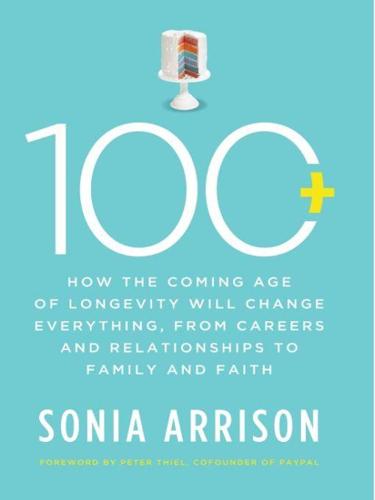
100 Plus: How the Coming Age of Longevity Will Change Everything, From Careers and Relationships to Family And
by
Sonia Arrison
Published 22 Aug 2011
As we learned in Chapter 2, in 2008 Sinclair’s company was sold to GlaxoSmithKline for $720 million, demonstrating that some of Ellison’s antiaging bets are not only edgy but also highly valued by the marketplace. Just as Bill Gates expressed an interest in biology, Ellison also says it could have been an alternate career, going so far as to actually spend two weeks working in the lab of Dr. Joshua Lederberg, the Nobel Prize–winning biologist.65 Peter Thiel is another Silicon Valley billionaire who actively supports work on longevity and is propagating the meme of healthy life extension. The PayPal cofounder and venture capitalist was also the first outside investor in Facebook (and was played by actor Wallace Langham in the movie The Social Network, starring Jesse Eisenberg and Justin Timberlake).
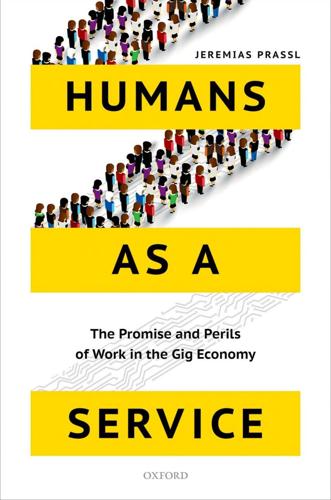
Humans as a Service: The Promise and Perils of Work in the Gig Economy
by
Jeremias Prassl
Published 7 May 2018
Uber’s investors did not put $13 billion into the company because they thought they could vanquish those incumbents under ‘level playing field’ mar- ket conditions; those billions were designed to replace ‘level playing field’ competition with a hopeless battle between small scale incumbents with no access to capital struggling to cover their bare bone costs and a behemoth company funded by Silicon Valley billionaires willing to subsidize years of multi-billion dollar losses. Given Uber’s growth to date, investor expectations that monopoly rents justifies the current level of subsidies and financial risks appears quite plausible.44 * * * 24 Work on Demand This account stands in stark contrast with the idea that the rise of gig- economy platforms will lead to increased competition, with lower prices and higher quality as the result: in the expensive pursuit of network effects, some platforms’ goal may well be to smother competition, rather than to encourage it.

To Be a Machine: Adventures Among Cyborgs, Utopians, Hackers, and the Futurists Solving the Modest Problem of Death
by
Mark O'Connell
Published 28 Feb 2017
(This, I realized with a small numinous thrill, was the very robot that had appeared on the cover of that week’s Time, a copy of which I’d bought in Heathrow Airport the previous morning, before boarding a plane whose in-flight entertainment package, I may as well tell you, included no fewer than four robo-centric film options: Big Hero 6, an animated children’s movie about a young boy and his robot friend; Ex Machina, an enjoyably creepy film about a Dr. Moreauvian Silicon Valley billionaire who holes himself up in a remote and hyper-secure mansion with a coterie of beautiful female sex-bots; Chappie, a just-about-watchable South African sci-fi romp about a police robot that gains sentience and falls in with a gang of armed robbers; and a bargain-basement B movie called Robot Overlords, which concerned the invasion of the Earth by tyrannical robots from outer space, and which starred a scenery-devouring Sir Ben Kingsley, whose fee I would guess accounted for much of the film’s budget.)
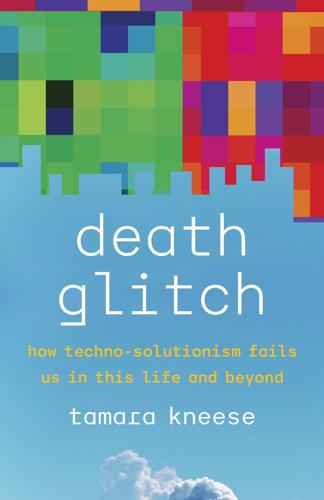
Death Glitch: How Techno-Solutionism Fails Us in This Life and Beyond
by
Tamara Kneese
Published 14 Aug 2023
Through my participation in a Digital Immortality meeting at the Computer History Museum in Mountain View, California, and a site visit to the Transhuman House in Provo, Utah, a smart home designed to appeal to those invested in posthuman futures, I show how death marks a point of breakdown in smart systems as logics fail to transfer from one generation to the next or from one person to another. Although the following vignettes hail from different geographic locations and points in time, these field sites overlap and inform one another. A Mormon transhumanist house in the shadow of a mountain in a sleepy college town has more in common with a cadre of Silicon Valley billionaires drinking cheap beer than one might anticipate. I highlight the tensions between the individualized, personalized settings of smart machines and attempts at a collective legacy for future generations. What does it mean to be good ancestors through digital remains? By examining the tricked-out dwellings of the present and future dead, I show how smart objects tap into both afterlife imaginaries and social reproduction.

The People's Platform: Taking Back Power and Culture in the Digital Age
by
Astra Taylor
Published 4 Mar 2014
But it doesn’t follow that criticizing “professionals” or “experts” or “cultural elites” means that we are striking a blow against the real powers; and when we uphold amateur creativity, we are not necessarily resolving the deeper problems of entrenched privilege or the irresistible imperative of profit. Where online platforms are concerned, our digital pastimes can sometimes promote positive social change and sometimes hasten the transfer of wealth to Silicon Valley billionaires. Even well-intentioned celebration of networked amateurism has the potential to obscure the way money still circulates. That’s the problem with PressPausePlay, a slick documentary about the digital revolution that premiered a leading American film festival. The directors examine the ways new tools have sparked a creative overhaul by allowing everyone to participate—or at least everyone who owns the latest Apple products.
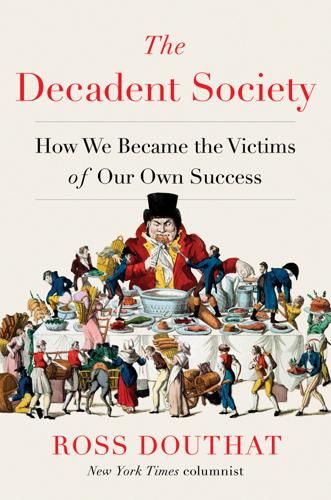
The Decadent Society: How We Became the Victims of Our Own Success
by
Ross Douthat
Published 25 Feb 2020
The success of a city-state such as Singapore might offer a political model for the next century that’s more relevant than today’s groaning national and imperial institutions. The oft-mocked libertarians who tried to make New Hampshire a “free state” via ideological in-migration, or the Silicon Valley billionaires imagining “seasteading” as a way to build new political institutions on land reclaimed from Poseidon, might actually be visionaries. Small might be beautiful; exit and internal exile might eventually make the world anew. But it’s also possible that local experiments can’t really work in a mass society and a globalized world absent a revolution from above.

The New Class Conflict
by
Joel Kotkin
Published 31 Aug 2014
Karel van Wolferen, The Enigma of Japanese Power: People and Politics in a Stateless Nation (New York: Knopf, 1989), pp. 46–47. 64. Greg Bensinger and David Benoit, “Icahn Targets Silicon Valley Directors’ Club,” Wall Street Journal, February 24, 2014. 65. Jessica Guynn, “Silicon Valley Staff-Poaching Suit Is Granted Class-Action Status,” Los Angeles Times, October 25, 2013; Dean Baker, “Silicon Valley Billionaires Believe in the Free Market, as Long as They Benefit,” Guardian, February 3, 2014; David Streitfeld, “Engineers Allege Hiring Collusion in Silicon Valley,” New York Times, February 28, 2014; Angela Moscaritolo, “Suit Reveals Alleged Silicon Valley Anti-Poaching Scheme,” PCMag, January 30, 2012, http://www.pcmag.com/article2/0,2817,2399555,00.asp. 66.

Artificial Unintelligence: How Computers Misunderstand the World
by
Meredith Broussard
Published 19 Apr 2018
(Minsky was on the scientific advisory board of Alcor Cryonics, a foundation for wealthy “transhumanist” true believers who maintain a freezer in Arizona for dead bodies and brains. The foundation’s multi-million-dollar trust is designed to keep the power on for decades.)15 Reading about Silicon Valley billionaires’ desires to live to age two hundred or talk with little green men, it’s tempting to ask: Were you high when you thought of that? Often, the answer is yes. Steve Jobs dropped acid in the early 1970s after he dropped out of Reed College. Doug Engelbart, the NASA- and ARPA-funded researcher who performed the 1968 “mother of all demos” that showed for the first time all the hardware and software elements of modern computing, dropped acid at the International Foundation for Advanced Study, the legal home for academic inquiry into LSD that lasted until 1967.

Live Work Work Work Die: A Journey Into the Savage Heart of Silicon Valley
by
Corey Pein
Published 23 Apr 2018
This neoreactionary hero was everything writers like Moldbug wanted in a king—wealthy, cunning, ruthless, conservative, white, and nerdy. He was the PayPal founder, Facebook board member, major shareholder in a CIA-funded company, Donald Trump delegate, distinguished Stanford alumnus, venture capitalist, and Silicon Valley billionaire Peter Thiel. Here was a rich, powerful man, regarded by many as a public intellectual, who, three years before White House adviser Steve Bannon declared war on “the administrative state,” was willing to say, regarding the “monolithic monstrosity” of government, that “breaking it down is probably an improvement.”

Road to Nowhere: What Silicon Valley Gets Wrong About the Future of Transportation
by
Paris Marx
Published 4 Jul 2022
We Just Call Them ‘Venture Capitalists,’” Intelligencer, December 2, 2020, Nymag.com. 2 Martin Kenney and John Zysman, “Unicorns, Cheshire Cats, and the New Dilemmas of Entrepreneurial Finance,” Venture Capital 21:1, 2019, p. 39. 3 Megan Cerullo, “Uber Loses an Average of 58 Cents Per Ride—and Says It’s Ready to Go Public,” CBS News, May 6, 2019, Cbsnews.com. 4 Mark O’Connell, “Why Silicon Valley Billionaires Are Prepping for the Apocalypse in New Zealand,” Guardian, February 15, 2018, Theguardian.com. 5 Kate Aronoff et al., A Planet to Win: Why We Need a Green New Deal, Verso Books, 2019, p. 108. 6 Charlie Jarvis, “A Shopper’s Heaven,” Real Life, March 29, 2021, Reallifemag.com. 7 Adam Forrest, “‘It’s Scary’: Shoppers Give Verdict on Amazon’s Futuristic Till-Free Supermarket,” Independent, March 4, 2021, Independent.co.uk. 8 Chris Gilliard, “Pedagogy and the Logic of Platforms,” Educause Review 52:4, July 3, 2017. 9 Chris Gilliard, “Friction-Free Racism,” Real Life, October 15, 2018, Reallifemag.com. 10 Lauren Smiley, “The Shut-In Economy,” Matter, March 25, 2015, Medium.com. 11 David A.

Other Pandemic: How QAnon Contaminated the World
by
James Ball
Published 19 Jul 2023
Sean Michaels, ‘Taking the Rick’, www.theguardian.com, 19 March 2008. 18. The 4channers here were more correct than the music and movie companies. Once legal streaming became available and affordable, few people bothered to pirate any more. 19. Trouble often started on Gawker, to such an extent that Silicon Valley billionaire Peter Thiel funded a Hulk Hogan lawsuit to bankrupt the site, likely as revenge for it outing him as gay years earlier. There is a good movie about the whole thing: Nobody Speak: Trials of the Free Press (dir. Brian Knappenberger, 2017). 20. Don’t take my word for it – see for yourself here: Tom Cruise Scientology Video, www.youtube.com/watch?

What Algorithms Want: Imagination in the Age of Computing
by
Ed Finn
Published 10 Mar 2017
A few weeks before Google purchased it, the company made international news with a machine learning algorithm that had learned to play twenty-nine Atari games better than the average human with no direct supervision.1 Now the same algorithm has replaced “sixty handcrafted rule-based systems” at Google, from image recognition to speech transcription.2 Most spectacularly, in March 2016 DeepMind’s AlphaGo defeated go grandmaster Lee Sedol 4–1, demonstrating its conquest of one of humanity’s subtlest and most artistic games.3 After a long doldrums, Google and a range of other research outfits seem to be making progress on systems that can gracefully adapt themselves to a wide range of conceptual challenges. This phase shift has produced a new crop of centers and initiatives grappling with the potential consequences of artificial intelligence, uniting philosophers, technologists, and Silicon Valley billionaires around the question of whether a truly thinking machine could pose an existential threat to humanity. In the paper where he described the Turing test, Alan Turing also took on the broader question of machine intelligence: an algorithm for consciousness. The Turing test was in many ways a demonstration of the absurdity of establishing a metric for intelligence; the best we can do is have a conversation and see how effective a machine is at emulating a human.
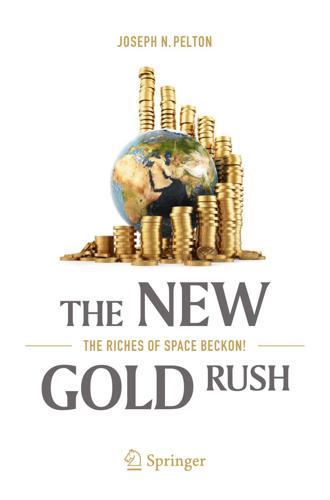
The New Gold Rush: The Riches of Space Beckon!
by
Joseph N. Pelton
Published 5 Nov 2016
The B612 Foundation has their own project known as Sentinel that is geared to find asteroids down to 35 m in size. Amazingly they have raised from private sources about half of the $400 to $500 million that is funding the project. Rusty Schwieckart and Ed Lu have said their project is equivalent in cost to that of an Interstate highway exchange. They have pled their case to Silicon Valley billionaires with some success. Their sales pitch is along the following lines: If NASA won’t make defending our planet a top priority, then help us to plot the orbits of the most dangerous space rocks and to find a much higher percentage of the city killers. Help us to build a satellite with better technology to spot dangerous space rocks and do so up to a century in advance.
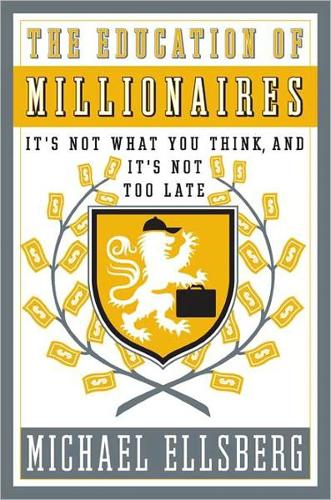
The Education of Millionaires: It's Not What You Think and It's Not Too Late
by
Michael Ellsberg
Published 15 Jan 2011
I just don’t think that holding bake sales and begging for little handouts by nonprofits is going to act quickly or powerfully enough. Business knows how to get things done. But it has to have a conscience, it has to want to make the world a better place and not just make a profit at any cost. It clearly doesn’t today.” Anthony Sandberg may not be famous. He may not be a Silicon Valley billionaire. But he is a wealthy man, in every sense of the word. And to achieve this wealth, he never once deferred any meaning, purpose, adventure, or excitement in his life. He has always gone toward meaning, purpose, adventure, and excitement. His life is profoundly meaningful to him and to the many people he teaches and leads.
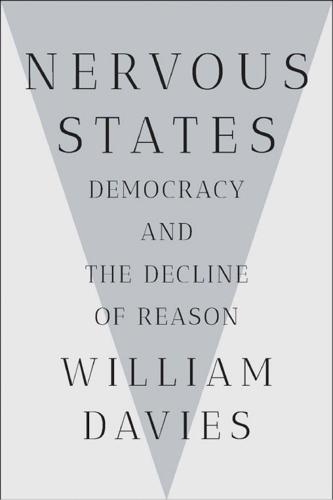
Nervous States: Democracy and the Decline of Reason
by
William Davies
Published 26 Feb 2019
This ideal was always exclusionary (of colonized and enslaved populations, not to mention nonhuman lives) but today this ideal of civility risks being abandoned, rather than expanded. We live in a time when the life expectancy of many poor populations (notably many of the same ones that have swung behind right-wing populists) are in decline, while Silicon Valley billionaires speculate wildly and financially on innovations that might extend human life indefinitely. This is not ordinary economic inequality, it is an existential inequality, which is at the heart of the conflicted political times we inhabit. Where life is not being adequately supported in a medical and scientific sense, then there is a widening opportunity for others to come in and offer to support it in a deeper ethical and metaphysical sense, while promising more exclusionary forms of protection.
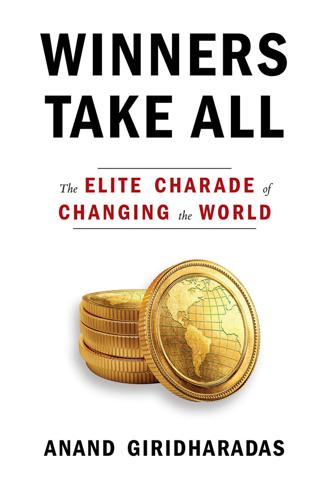
Winners Take All: The Elite Charade of Changing the World
by
Anand Giridharadas
Published 27 Aug 2018
Elite networking forums like the Aspen Institute and the Clinton Global Initiative groom the rich to be self-appointed leaders of social change, taking on the problems people like them have been instrumental in creating or sustaining. A new breed of community-minded so-called B Corporations has been born, reflecting a faith that more enlightened corporate self-interest—rather than, say, public regulation—is the surest guarantor of the public welfare. A pair of Silicon Valley billionaires fund an initiative to rethink the Democratic Party, and one of them can claim, without a hint of irony, that their goals are to amplify the voices of the powerless and reduce the political influence of rich people like them. The elites behind efforts like these often speak in a language of “changing the world” and “making the world a better place” more typically associated with barricades than ski resorts.
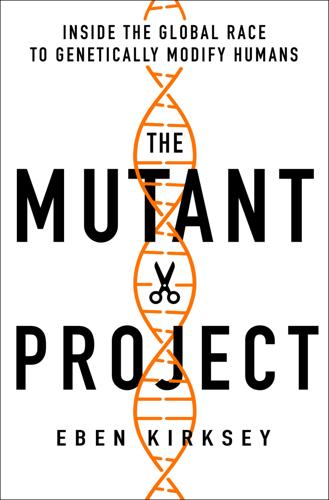
The Mutant Project: Inside the Global Race to Genetically Modify Humans
by
Eben Kirksey
Published 10 Nov 2020
As I left Penn Medicine and headed back toward my friend’s place in Fishtown, I reflected on the CRISPR moonshot as lyrics from a classic song by Gil Scott-Heron rattled around in my head: “I can’t pay no doctor bill (but Whitey’s on the moon) / Ten years from now I’ll be payin’ still (while Whitey’s on the moon) / No hot water, no toilets, no lights (but Whitey’s on the moon).” While many Americans still can’t pay doctor bills, the cash continues to flow to experimental medicine. As Silicon Valley billionaires and scientific entrepreneurs usher in a new era of medical inequality, some patients are shaking up the status quo. Time is running out—the oxygen is running low—as Whitey continues to reach for the moon. 9 FREE HEALTH CARE FOR ALL A decade before his CRISPR study got off the ground, Carl June led an experiment that was dubbed the “first-in-human” gene-editing trial.
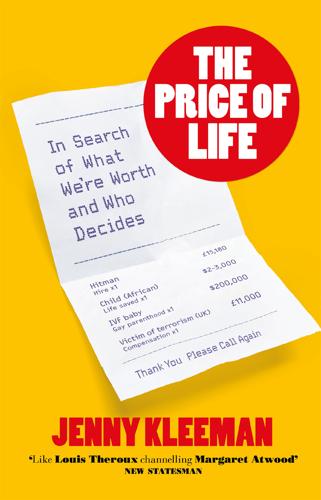
The Price of Life: In Search of What We're Worth and Who Decides
by
Jenny Kleeman
Published 13 Mar 2024
In 2016 he was ranked number two on Forbes’ ‘America’s Richest Entrepreneurs Under 40’ list, second only to his old roommate. It’s now 2019 and he’s the richest person living in the city of San Francisco, and far too important to grant me an audience today. But I’ve read enough about him to know that Moskowitz is no ordinary Silicon Valley billionaire. Instead of spending his wealth on jets, yachts, space rockets and apocalypse-proof bunkers, he and his wife, the former Wall Street Journal reporter Cari Tuna, are giving his money away. The forty or so millennials who work here at OpenPhil (as they like to call it) are tasked with deciding who gets $11 billion of his fortune.

The Sirens' Call: How Attention Became the World's Most Endangered Resource
by
Chris Hayes
Published 28 Jan 2025
“The issue we are solving is simple,” one programmer told Business Insider. “Why are Elon’s tweet counts dropping. It’s that and only that—not about other accounts.”[63] Musk is an extreme example, but he is by no means alone. What you can see in his generational cohort is the same thirsty, grasping desire for attention: Silicon Valley billionaires starting their own podcasts, or posting compulsively, like hedge fund billionaire Bill Ackman. This age’s new plutocrats are obsessed with attention. * * * — This trajectory is a perfect fable for the attention age. Here was a man, in Musk, who had every material, financial resource, everything that the totality of human history up until that point could produce to be bought or owned by one man.

Rise of the Robots: Technology and the Threat of a Jobless Future
by
Martin Ford
Published 4 May 2015
Robert Geraci, a professor of religious studies at Manhattan College, wrote in an essay entitled “The Cult of Kurzweil” that if the movement achieves traction with the broader public, it “will present a serious challenge to traditional religious communities, whose own promises of salvation may appear weak in comparison.”7 Kurzweil, for his part, vociferously denies any religious connotation and argues that his predictions are based on a solid, scientific analysis of historical data. The whole concept might be easy to dismiss completely were it not for the fact that an entire pantheon of Silicon Valley billionaires have demonstrated a very strong interest in the Singularity. Both Larry Page and Sergey Brin of Google and PayPal co-founder (and Facebook investor) Peter Thiel have associated themselves with the subject. Bill Gates has likewise lauded Kurzweil’s ability to predict the future of artificial intelligence.

Age of Anger: A History of the Present
by
Pankaj Mishra
Published 26 Jan 2017
Several generations of conservative politicians have asserted the same, and have been hailed for their wisdom. Today, left-leaning admirers of Edward Snowden and critics of the National Security Agency (NSA) and Guantanamo believe this to be true as much as the NRA, white militias and survivalist groups. The libertarian Silicon Valley billionaire Peter Thiel blames big government on the enfranchisement of women, and he issues such grandiloquent Nietzscheanisms as ‘The fate of our world may depend on the effort of a single person who builds or propagates the machinery of freedom that makes the world safe for capitalism.’ But, as his own last months before his execution in 2001 by lethal injection reveal, McVeigh’s rhetoric of freedom from arbitrary and opaque authority has a much wider resonance and appeal outside as well as inside the United States.
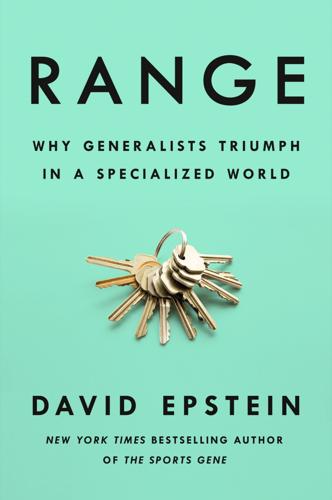
Range: Why Generalists Triumph in a Specialized World
by
David Epstein
Published 1 Mar 2019
Eastman narrates his life like a book of fables; each experience comes with a lesson. “I think that housepainting was probably one of the greatest helps,” he told me. It afforded him the chance to interact with a diverse palette of colleagues and clients, from refugees seeking asylum to Silicon Valley billionaires whom he would chat with if he had a long project working on their homes. He described it as fertile ground for collecting perspectives. But housepainting is probably not a singular education for geopolitical prediction. Eastman, like his teammates, is constantly collecting perspectives anywhere he can, always adding to his intellectual range, so any ground is fertile for him.

The AI Economy: Work, Wealth and Welfare in the Robot Age
by
Roger Bootle
Published 4 Sep 2019
In order to make sure that he is still around to enjoy escape into immortality, Kurzweil reportedly “takes as many as two hundred pills and supplements each day and receives others through regular intravenous infusions.”10 Kurzweil is quite a character. In 2009 he starred in a documentary Transcendent Man. Would you believe it, there was even a Hollywood version, called Transcendence, starring Johnny Depp, released in 2014. It is easy to dismiss Kurzweil as a crank. Yet quite a few Silicon Valley billionaires have embraced the idea of the Singularity. And in 2012 Google hired Kurzweil to direct its research into AI. The vision of the roboticist Hans Moravec goes further. He foresees a future in which part of the universe is “rapidly transformed into a cyberspace [wherein beings] establish, extend, and defend identities as patterns of information flow … becoming finally a bubble of Mind expanding at near light speed.”11 Inevitability is a big word When I contemplate the visions of the thinkers quoted above, my reaction is: Gosh!
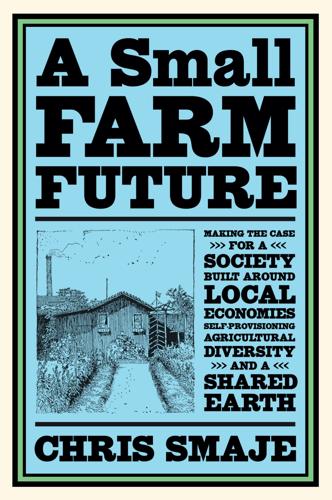
A Small Farm Future: Making the Case for a Society Built Around Local Economies, Self-Provisioning, Agricultural Diversity and a Shared Earth
by
Chris Smaje
Published 14 Aug 2020
Overton 1996, 21, provides one historical analysis of these relative disadvantages of small scale, but with little attention to the political forces underlying it. For a more detailed evaluation, see Smaje, Chris (2020) ‘Of Scarcity and Scale,’ Small Farm Future, 12 April, https://smallfarmfuture.org.uk/2020/04/of-scarcity-and-scale/. 71. O’Connell, Mark (2018) ‘Why Silicon Valley Billionaires Are Prepping for the Apocalypse in New Zealand,’ The Guardian, 15 February. 72. For example, FAO 2016; UNDRR 2019; Wiebe et al. 2015. 73. For example, Badgley et al. 2007. 74. FAO 2016. 75. WDI n.d. 76. These data derive mostly from Lampkin, Nicholas et al. (2017) 2017 Organic Farm Management Handbook, Newbury: Organic Research Centre. 77.
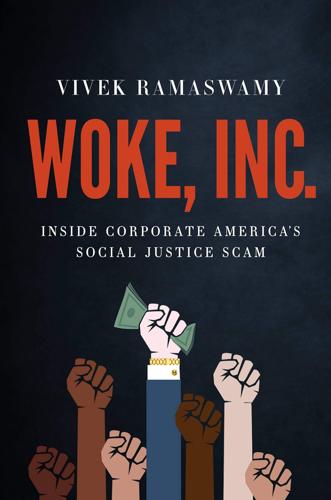
Woke, Inc: Inside Corporate America's Social Justice Scam
by
Vivek Ramaswamy
Published 16 Aug 2021
Third, liberal lawmakers congratulate social media companies after they go on to censor content that Democrats don’t like. Fourth, tech titans manage to take their most aggressive actions of all just as Democrats are poised to take control of the White House, the Senate, and the House of Representatives for the first time in over a decade. And fifth—of course—Silicon Valley billionaires made staggeringly one-sided campaign contributions to those same Democratic candidates as a token of appeasement. In 2020, the mantra of “keeping money out of politics” was no longer a liberal slogan. Instead, blending profits with politics—and, ultimately, power—became the new progressive way.

Genius Makers: The Mavericks Who Brought A. I. To Google, Facebook, and the World
by
Cade Metz
Published 15 Mar 2021
Alongside Peter Thiel and Elon Musk, Nosek had originally risen to prominence as part of the team that created PayPal—the so-called “PayPal Mafia.” Soon after receiving the video of DeepMind’s Atari-playing AI, as Nosek later told a colleague, he was on a private plane with Musk, and as they watched the video and discussed DeepMind, they were overheard by another Silicon Valley billionaire who happened to be on the flight: Larry Page. This was how Page learned about DeepMind, sparking a courtship that would culminate in the Gulfstream flight to London. Page wanted to buy the start-up, even at this early stage. Hassabis wasn’t so sure. He had always intended to build his own company.
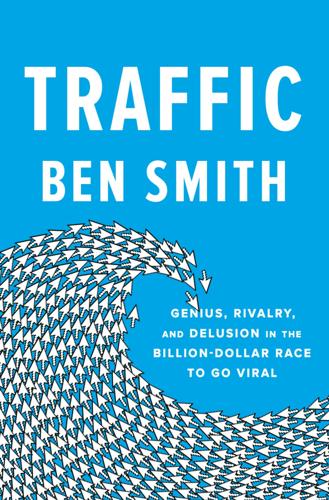
Traffic: Genius, Rivalry, and Delusion in the Billion-Dollar Race to Go Viral
by
Ben Smith
Published 2 May 2023
Jonah’s desperation took human form in Carlos Watson, the relentless networker with a big smile and an enveloping handshake who had, in 2013, persuaded the richest woman in the world, Laurene Powell Jobs, to finance his high-minded BuzzFeed alternative, Ozy. When Carlos first sold the idea, it had been keyed to the dreams of Silicon Valley billionaires: BuzzFeed, but without the silly memes, the emotion, or the left-wing politics, and with a Black CEO who was a welcome change in a white-dominated industry. This was a website devoted to the things, Watson promised, that millennials really craved—new ideas, technology, and people, all wrapped around centrist politics so capacious that its marquee interviews, which Carlos conducted, included both George W.
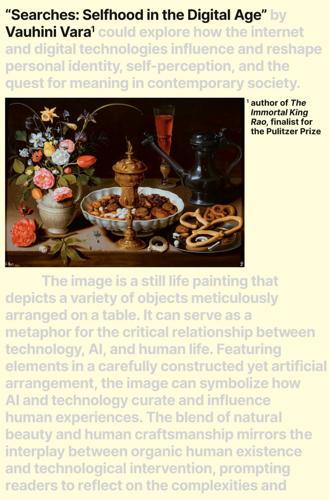
Searches: Selfhood in the Digital Age
by
Vauhini Vara
Published 8 Apr 2025
“Newspaper stories are intended, ultimately, to convey information, while fiction stories are intended—in my view—to convey a certain feeling,” I wrote in the personal statement I sent to the Iowa Writers’ Workshop. I added that I’d been “looking forward to returning to studying and writing about everyday people and their motivations—in other words, not just Silicon Valley billionaires.” I was sitting in my beloved beige cubicle at the Journal’s office on California Street, in San Francisco’s Financial District, when the writers’ workshop’s director, Lan Samantha Chang, called, the following February, to offer me admission. At the time, I was finishing the profile I’d been writing of Mark Zuckerberg, the one for which his mentor, Roger McNamee, had told me about Zuckerberg’s early struggles with the CEO position; in a few weeks, Facebook would announce Sandberg’s appointment as chief operating officer.

When It All Burns: Fighting Fire in a Transformed World
by
Jordan Thomas
Published 27 May 2025
While it’s easy to blame the attrition of the federal wildland firefighting workforce solely on right-wing efforts to dismantle America’s public sector, it also reflects a broader political tendency to resist investing in communities most capable of mitigating climate impacts. Policymakers and the public alike often fixate on technological solutions to environmental crises. For example, Silicon Valley billionaires have proposed generating artificial rainstorms to combat fires, and a California gubernatorial candidate suggested using water piped from the Mississippi River to spray megafires. Such futuristic solutions frequently obscure the value of low-tech, human solutions available now. In reality, fire management relies on individuals who have spent decades developing skills born of experience, necessity, and exposure.

Uneasy Street: The Anxieties of Affluence
by
Rachel Sherman
Published 21 Aug 2017
Yet these positive representations make the same point as negative ones: they reiterate the moral importance of hard work and the moral transgressiveness of elitism and excessive consumption (which has become, a century after Veblen, increasingly associated with wealthy women). Represented as hard workers who used their smarts to get ahead, good rich people are also often seen as minimalist consumers. Buffett, despite his billions, has famously lived since the 1950s in the same modest house in Omaha. Silicon Valley billionaires are known for their understated self-presentation (think of Jobs’s black mock turtleneck or Mark Zuckerberg’s gray sweatshirt).24 Gates, Buffet, Zuckerberg, and others are also lauded for their significant philanthropic enterprises across the country and the globe. Possessing a down-to-earth affect is another plus; in 2004 George W.

Digital Disconnect: How Capitalism Is Turning the Internet Against Democracy
by
Robert W. McChesney
Published 5 Mar 2013
Diamandis and Steven Kotler, Abundance: The Future Is Better Than You Think (New York: The Free Press, 2012), 10. 10. Daisy Grewal, “How Wealth Reduces Compassion,” Scientific American, Apr. 10, 2012. 11. Dacher Keltner, “Greed Prevents Good,” Room for Debate section, NY Times.com, Mar. 16, 2012. 12. George Packer, “No Death, No Taxes: The Libertarian Futurism of a Silicon Valley Billionaire,” New Yorker, Nov. 28, 2011. 13. The class basis of capitalism is nowhere to be found in the catechism because the emphasis is on merchants and customers coming together to voluntarily buy and sell goods and services in the market. In the case of labor, this is anything but a market where the two sides approach as equals. 14.

Plutocrats: The Rise of the New Global Super-Rich and the Fall of Everyone Else
by
Chrystia Freeland
Published 11 Oct 2012
This is the project of the Seasteading Institute, which is hoping to construct man-made islands in the international waters of the ocean, beyond the legal reach of any national government. These oases, where the rich would be free to prosper unrestrained by the grasping of the 99 percent, are the brainchild of Milton Friedman’s grandson and are being funded in part by Silicon Valley billionaire and libertarian Peter Thiel. Not all plutocrats want to escape to a Seastead. Paul Martin and Ernesto Zedillo are members in good standing of the global elite. Martin is a former Canadian prime minister, finance minister, deficit hawk, and, in his life before politics, a multimillionaire businessman.

The Long History of the Future: Why Tomorrow's Technology Still Isn't Here
by
Nicole Kobie
Published 3 Jul 2024
For example, Kenya had mobile banking via the M-PESA text messaging system back in 2005, a clever tech solution to help the millions of unbanked people in the region – that was actually inspired by their own kludge of using mobile airtime credits to stand in for cash. At the time, it still took a UK bank three days to transfer money between accounts. But not all problems have tech answers. If we leave it up to engineers, Silicon Valley billionaires or the like, they’re going to keep looking to technology for answers. It’s not a surprise that an internet company believes more internet is the key to development and fighting social ills. It’s why a technologist like Sebastian Thrun thinks driverless cars are the right tool to end road accidents.

Fire in the Valley: The Birth and Death of the Personal Computer
by
Michael Swaine
and
Paul Freiberger
Published 19 Oct 2014
Gassée was a former top manager at Apple and was popular with Apple’s engineers, the Be operating system had a friendly feel that seemed very Mac-like, and the technology was state of the art. It was easy to imagine BeOS as the future of the Mac and Gassée back in charge of (at least) engineering. But Hancock told the press cryptically, “Not everyone who is talking to us is talking to you.” Meanwhile, Oracle’s unpredictable founder Larry Ellison, now a member of the Silicon Valley billionaire boys’ club, was stirring things up by hinting that he would buy Apple and let his good friend Steve Jobs run it. Jobs gave no credence to Ellison’s hints, and no one took Ellison too seriously, but Jobs did at one point call Del Yocam, Apple’s COO from the company’s best days and now CEO of a restructured and renamed Borland (to Inprise), to bend Yocam’s ear about their running Apple together.
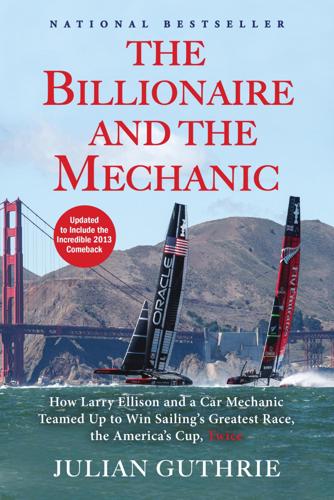
The Billionaire and the Mechanic: How Larry Ellison and a Car Mechanic Teamed Up to Win Sailing's Greatest Race, the Americas Cup, Twice
by
Julian Guthrie
Published 31 Mar 2014
It is that moment when the history of the sport takes a big step forward, when human drama, grit, perseverance, and a bit of luck come together. The America’s Cup creates a new ideal, a new vision of what is possible on the water. It was unseasonably cold for the beginning of the best of three series between USA-17 and Alinghi 5, between the Silicon Valley billionaire—who had lost two Cup challenges and was determined not to lose for a third consecutive time—and the Swiss billionaire, who had won the last two America’s Cups and believed he would win again. The first race would be forty nautical miles (twenty miles to windward and return), and the second race would be a thirty-nine-mile equilateral triangle (with the first leg to windward and the other two broad reaches) with each of the three legs being thirteen miles.
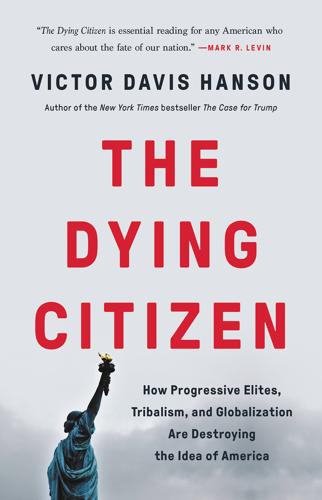
The Dying Citizen: How Progressive Elites, Tribalism, and Globalization Are Destroying the Idea of America
by
Victor Davis Hanson
Published 15 Nov 2021
That iconic day has now ceased to exist in a fashion that even the Left once warned was fraught with dangers of fraud and a general inability to authenticate voter eligibility and identification—at least in consistency with standards of the past. Early voting even ensured that perhaps sixty to seventy million voters had cast their ballots well before the last presidential debate. Various Silicon Valley billionaires poured nearly $500 million into the race, focusing their gifts on targeted precincts felt to be vital for progressive candidates.13 The resulting conundrum led to immediate charges from the Trump camp of voter fraud—less than fifty thousand strategically placed votes had determined the election—and then countercharges against the Trump campaign of insurrection, treason, and coups, especially when Trump demanded recounts and questioned the legitimacy of the electors and their vote all the way into January 2021.

Green Tyranny: Exposing the Totalitarian Roots of the Climate Industrial Complex
by
Rupert Darwall
Published 2 Oct 2017
We’re repulsed by some of our supposed brothers and sisters lining up with job killers like the Sierra Club and the Natural Resources Defense Council to destroy the lives of working men and women.25 In September 2015, 21 Democratic assembly members of the Californian legislature—including 11 blacks and Latinos—crossed party lines to vote with Republicans to stop a bill requiring steeper cuts in greenhouse gas emissions. “Who does it impact the most? The middle class and low income folks,” one of them shot back.26 Environmentalism fueled by West Coast billionaires and philanthropic foundations meant that working people lost the political party that was meant to represent them. Money can’t buy me love, but it had bought the soul of the Democratic Party. * In August 2014, Steyer’s NextGen Climate praised the RFS: “The RFS supports 73,000 good-paying, clean energy jobs in Iowa and is helping us reduce our dependence on fossil fuels.”
…
It was a means, not an end. And I’m going to be looking for other means to address this problem.23 Sue-and-settle came at a cost, not least to EPA’s integrity as a public agency. It transferred power from the legislative to the executive branches and thence to unaccountable NGOs funded by West Coast billionaires and progressive foundations. Reminiscent of Germany’s Energie Putsch masterminded by lobbyist/legislator Hermann Scheer ten years earlier, public policy was captured by green ideologues (Chapter 12). The extent of the collusion between the EPA and the NRDC and other NGOs in using the threat of litigation to capture federal policy and how the contrived sue-and-settle stratagem required EPA’s full complicity is laid bare in a 2015 report by the new majority staff of the Senate EPW committee under its Republican chairman, James Inhofe.24 It was something the EPA didn’t want the world to know about.
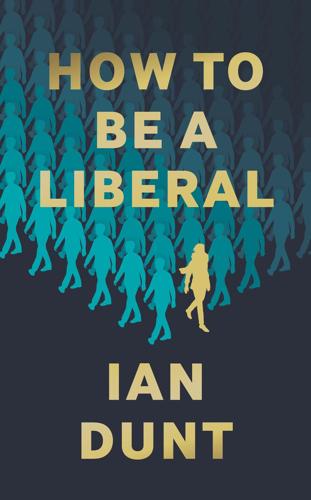
How to Be a Liberal: The Story of Liberalism and the Fight for Its Life
by
Ian Dunt
Published 15 Oct 2020
The second was to strip the person of their identity altogether and claim that they were not really black, or not really gay, or not properly a woman, because if they had been, they would not have held those opinions. This second approach, which on the face of it was absurd, became quite common. When Peter Thiel, the gay Silicon Valley billionaire, expressed support for the Republicans in 2016, he was soon told that he was no longer entitled to his sexual identity. ‘By the logic of gay liberation, Thiel is an example of a man who has sex with other men, but not a gay man,’ the writer Jim Downs wrote in Advocate magazine, ‘because he does not embrace the struggle of people to embrace their distinctive identity.’
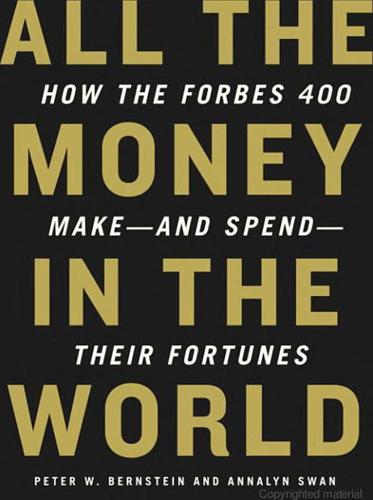
All the Money in the World
by
Peter W. Bernstein
Published 17 Dec 2008
One class exercise18 at the local junior high school, designed to help seventh graders sharpen their math skills, is called “How to Be a Millionaire.” * * * West Coast billionaires not only start young; they also tend to be more entrepreneurial and unconventional. The seeds for many of these fortunes are found in eureka moments of scientific discovery—when a new piece of software or hardware is developed, or when someone figures out a process that makes it possible to etch more circuits on a silicon chip or develop mathematical algorithms for a more efficient Web search engine. In fact, many West Coast billionaires did not even begin their careers with the objective of becoming wealthy.
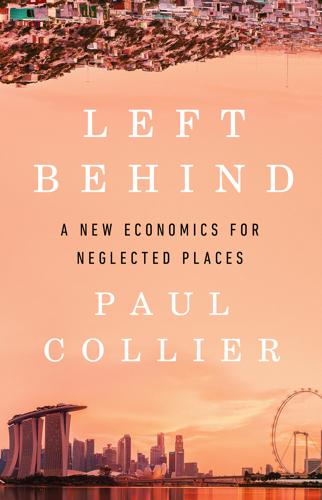
Left Behind
by
Paul Collier
Published 6 Aug 2024
There are several countries in which the state is so thin as to be almost completely ineffective. The Central African Republic has become such a country, with negligible state presence further than a few miles from the capital. Rural CAR and other state-free areas closely approximate to that dream of some of the West Coast billionaires: their stateless society. But recall that no billionaires choose to live there: rich outsiders would be in peril. Small stateless communities have been able to enforce social rules, as Elinor Ostrom showed. But none of them reaped the scale economies for prosperity. Our distant ancestors lived in these stateless communities for millennia, but the global population they sustained was tiny.

The Quest: Energy, Security, and the Remaking of the Modern World
by
Daniel Yergin
Published 14 May 2011
Over this same period biofuels have generated enormous political swell in the United States, starting of course with the traditional advocates: farmers and their political allies who have always looked to ethanol as a way to diversify agricultural markets, generate additional revenues, and contribute to farm income and rural development. But there are new supporters: environmentalists (at least some), automobile companies, Silicon Valley billionaires, Hollywood moguls, along with national security specialists, who want to reduce oil imports because of worries about the Middle East and the geopolitical power of oil. More recently, they have all been joined by formidable new players: the U.S. Navy and Air Force, which are promoting biofuels development to improve combat capabilities and increase flexibility—and to diversify away from oil.